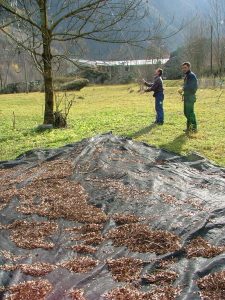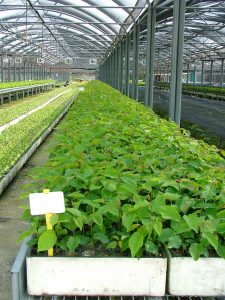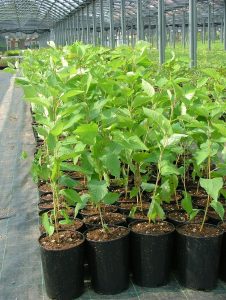The management of forest environments includes several action varying according to the many different potential targets of the forest management itself. It is therefore crucial to identify its main role and uses on that basis select the most suitable management practices.
Oftentimes however wildlife does get overlooked in that process, as does a more comprehensive perspective on the whole ecosystem.
Among the main threats to wildlife and also to community interest habitats conservation in forest environments as are intensive timber harvesting, extensive clearcutting, understory clearings, forest floor clean-ups, reduction of the ecotone area transitioning from forest to open spaces, as well as the choice of time of logging only backed up by logistics or silviculture logics.
A group of forest, wildlife, plants and insect experts will plan and implement actions in forests (actions A8 and C13) aimed at community interest habitat and species conservation needs to meet sustainable forestry guidelines while improving the forest composition and structure and its ability to support wildlife, developing managing protocols including best practices which could be transferred to other N2000 network forests.
The project areas will be selected within those forests owned by Regione Lombardia, which include 23 N2000 sites and hold both FSC and PEFC certifications. Project areas of choice will include the following habitats, currently holding an inadequate conservation status on a regional scale, as well as wildlife species which can clearly mark good environmental quality and whose conservation status is closely linked to appropriate forestry management practices:
- Habitat 9110 Luzulo-Fagetum beech forests
- Habitat 91K0 Illyrian Fagus sylvatica forests (Aremonio-Fagion)
- Habitat 9180* Tilio-Acerion forests of slopes, screes and ravines
- Habitat 9410 Acidophilous Picea forests of the montane to alpine levels (Vaccinio-Piceetea)
- Saproxylic Beetles, especially Rosalia alpine (listed in Annex II Habitat Dir.)
- Owls, including the boreal owl (Aegolius funereus) and the Eurasian pygmy owl (Glaucidium passerinum), mainly living in coniferous forests (both listed in Annex I Birds Dir.)
- Piciformes, i.e. the black woodpecker (Dryocopus martius) and the grey-headed woodpecker (Picus canus) (listed in Annex I Birds Dir.)
One of the tools to forests biodiversity conservation is also an appropriate management of the gene pools of spontaneous vegetation species living in Lombardy’s habitats.
One of the goals of GESTIRE2020 is securing the correct and sustainable production of forest tree nursey stock. Seedlings are crucial to forest habitats restocking and restoration, as well as to the creation of ecological corridors.
The project therefore includes (action A6) the review of the register listing the forests for seed production in the Lombardy region (RE.BO.LO.) and the drafting of a forestry management protocol for each seed collection area, in order to secure both a high seed productivity and biodiversity in genetic material over time.



Activities crucial to that end (actions A6 and C14) will focus on oak (Quercus robur L.), aiming at increase gene variability and strength of this species which is currently declining in the Po river basin as its forest habitats (9160, 9190, 91L0, 91F0) are confined to residual areas in the Pianura Padana. Such forced gentic isolation leads to weakness in oak specimens, which show an even lower degree of competiveness to alien species while also having to face climate change, environmental stresses, pest and diseases.
The GESTIRE2020 project in order to secure the biodiversity of the species will draft a genetic-based forest management protocol will be drafted for all the relict Quercus robur forests in the Pianura Padana. Seed from forests selected for seed production will be grown to produce resistant oak ecotypes and phenotypes whose specimen will be used in revegetation projects, in the creation of ecological corridors, and in restocking forest habitats 9160, 9190, 91L0, 91F0.
To that very end the project will also promote the establishment of a Biogenetic Reserve in the Carpaneta lowland forest. The forest covers 41 ha of close to nature tree plantation, mimicking the structure typical to the Pianura Padana mixed oak forest where specimens belonging to several different genetic pools of the Po river basin and of the Pianura Padana grow. Once it reaches its sexual maturity, it will serve as a tree stand for seed production, supplying propagation material with a high genetic variability, to be used in the conservation and restoration of existing degraded oak forests.
Furthermore, a forestry and seed harvesting management protocol will be drafted for the Forest collection area, in order to secure both a high acorn productivity and biodiversity in genetic material in order for the Forest to be eventually listed in the RE.BO.LO.
